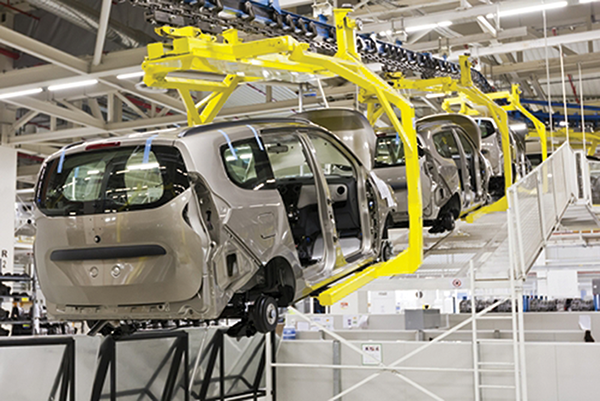Indian automobile industry faces the problem of plenty

Will the falling automobile sales trigger an economic recession? First the US and now the European Union (EU) are facing the same problem. Automobile sales across the world are declining.
Nearly every major automaker in the US reported weak sales for the first quarter of 2019. Rising vehicle prices and the fear of continuing high interest rates are considered among the major reasons for this downturn. General Motors witnessed a 7% drop in first quarter sales in 2019 compared to the same period last year. According to industry data, Ford’s sales fell by 2% in the same quarter.
New vehicle sales in the US were at 1,590,217 units in May. This represented a decline of 0.2% from May 2018. Passenger car sales fell 10.4% to 474,138 units last May.
According to the European Automobile Manufacturers Association, the sales figure for March 2019 for the European passenger car market saw a 3.9% decline on a y-o-y basis. Sales in March was dismal with Italy posting the highest percentage drop (-9.6%), followed by Spain (-4.3%), the United Kingdom (-3.4%), France (-2.3%), and Germany (-0.5%).
Indian auto-makers are facing the problem of plenty. The stockyards of automobile manufacturers have piles of unsold cars. This has compelled the country’s top auto majors to cut production. Passenger vehicle sales in India posted the steepest drop in nearly 18 years in May amid weak demand and a liquidity crunch faced by non-bank vehicle financiers.
Maruti Suzuki India, India’s biggest car maker, has reduced vehicle production by over 18% in May. It is the company’s fourth consecutive month of taking a production cut. Maruti produced 1,51,188 units in May, including Super Carry LCV. This represents a drop by 18.1% from 1,84,612 units in the same month a year ago. Barring Super Carry, the company reduced production of all other segments, including that of its big selling compact and mini cars in May. The company has cut production of passenger vehicles, including Alto, Swift, and Dzire by 18.88% to 1,48,095 as compared to 1,82,571 units in May 2018.
Affected by the slump in the Indian auto market, Hyundai Motor India’s domestic volumes witnessed a decline in May 2019 at 42,502 units, dropping by 5.6% as against 45,008 units sold in May 2018.
Tata Motors witnessed a decline of 20% in commercial and passenger vehicles sales in the domestic market to reach 42,577 units in April 2019. In comparison, the company had sold 53,511 units in April 2018. The domestic sales of Tata Motors’ passenger vehicles declined by 26% to reach 12,694 units in April 2019. During the same month last year, the company had sold 17,235 units.
Industry scenario
According to Society of Indian Automobile Manufacturers, the industry produced a total 4,879,375 vehicles including passenger vehicles, commercial vehicles, three wheelers, two wheelers and quadricycle in April-May 2019 as against 5,380,019 in April-May 2018, registering a decline of 9.3% over the same period of last year.
The sales of passenger vehicles declined by 18.8% in April-May 2019 as compared to the same period of the last fiscal. The sales of passenger cars was hit sharply due to a fall in consumption expenditure – passenger car sales declined by about 23% in the first two months of the current fiscal compared to the same period last year. Sale of utility vehicles also declined by 6.2% for the same period.
The overall commercial vehicles segment registered a decline of 8% in April-May 2019 as compared to the same period of the last year. Sales of medium and heavy commercial vehicles declined by 16.7% and that of light commercial vehicles declined by 2.4% in April-May 2019 over the same period of 2018. Two wheelers sales fell 11.7% in April-May 2019 over the same period last year. Within the two wheelers segment, scooters, motorcycles and mopeds declined by 17.7%, 8.4%, and 17.7%, respectively in April-May 2019 as compared to the same period in the last fiscal.
In April-May 2019, overall automobile exports declined by 0.3%. Amidst an overall decelerating growth, the passenger vehicles and two wheelers did well to increase exports by 5.2% and 1.7%, respectively, during this period. But the benefit of higher growth in passenger vehicles was eaten away by a sharp fall in exports of commercial vehicles. Exports of commercial vehicles fell by a huge 55.0% during this period. Exports of three wheelers declined 10.9%.
